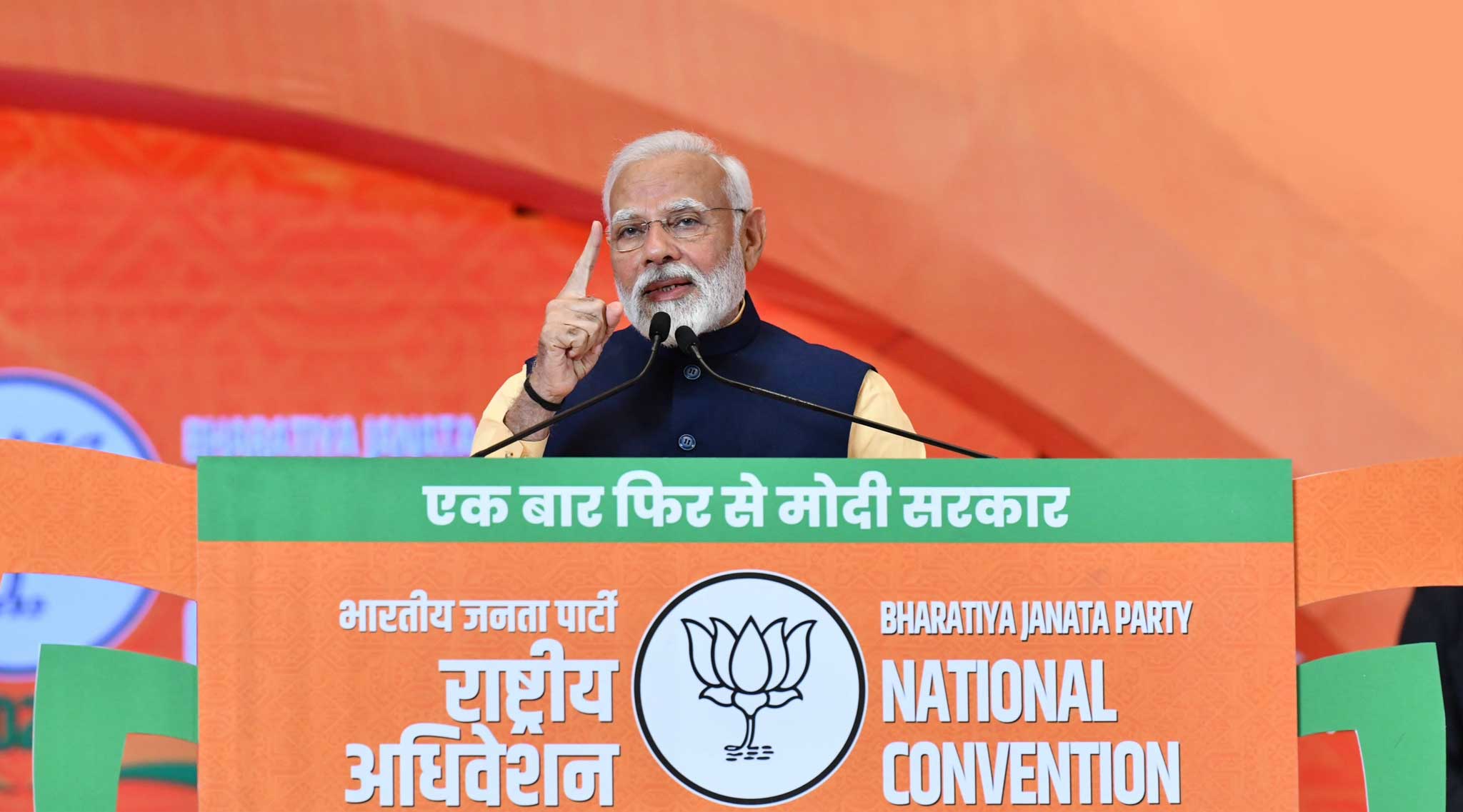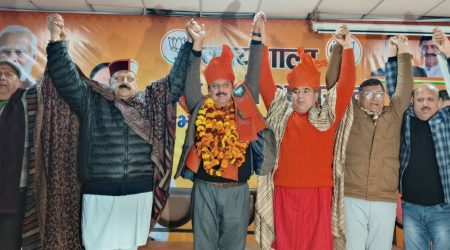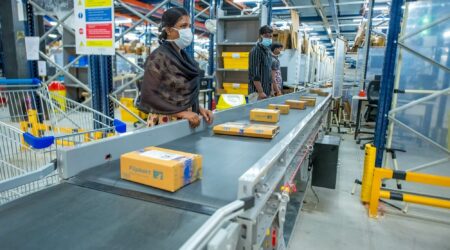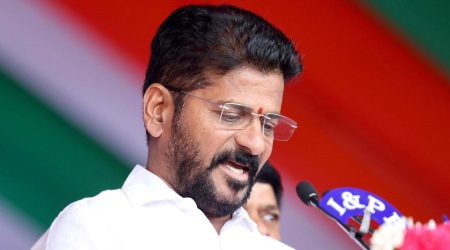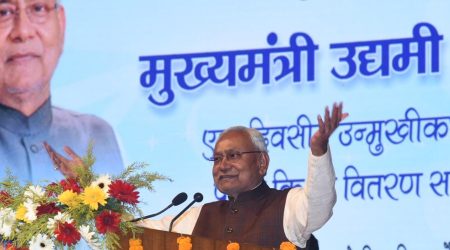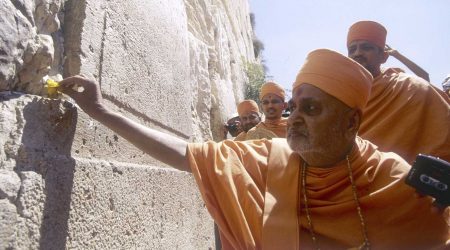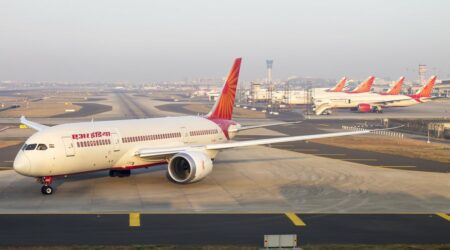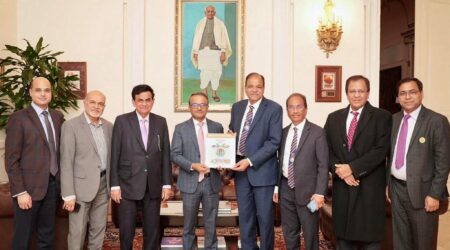By Vipul Tamhane
In 2024, India faces a significant political year with a rather interesting election.
The BJP claims to be guiding India towards being an economic superpower, while the opposition accuses it of failing. Analyzing the BJP’s manifesto and comparing it to the UPA era will provide an unbiased view of their performance.
This analysis addresses four key questions: what was BJP’s 2019 manifesto promise, how many of these promises were fulfilled, what was not delivered, and whether economic conditions are improving or worse.
The BJP’s manifesto emphasized a strong focus on national security and internal law enforcement, committing to a zero tolerance policy against terrorism and extremism. They pledged to improve J&K’s security and abrogation of article 370.
The statistics show a 77 percent decrease in terror attacks from 2004 to 2022 during the NDA regime led by BJP. The number of terror strikes in J&K has also decreased by 32 percent, with a 14 percent decrease in civilian deaths.
The BJP promised self-reliance and export capability in the defense sector, leading to a 10 times increase in defense exports since 2016-17 and exports to around 85 countries. The allocation of Rs 1863.6 million for these measures has been spent effectively.
There has been a 52 percent decrease in incidents of left-wing extremism during the NDA regime compared to the UPA government from 2005-14, with a 52 percent decrease in incidents and 69 percent decrease in death toll.
The BJP’s promise to curb infiltration and illegal immigrants, including the National Registry of Citizens, led to protests in over a dozen cities. The BJP’s main security goals included soldier welfare, combating infiltration, and strengthening border security, including Coastal Safety. While the BJP has made significant strides in external security, they need to improve internal law and order.
The BJP government under the leadership of Prime Minister Narendra Modi has aimed to double farmer income by 2022 since 2016, but the real income of farmers adjusted for inflation has not been as significant as expected.
From 2005 to 2012, real farmer income increased by 7.5 percent, but from 2012 to 2016 it only increased by 0.44 percent and then decreased by 1.5 percent. Factors such as droughts, Russia-Ukraine war, and Covid played a crucial role in the disruption. As of 2021, India’s food grain production is 311 million metric tons, but its storage capacity is only 145 million metric tons, resulting in post-harvest losses of up to 30 percent.
However, the BJP has successfully completed 94% of its promise to digitize land records, with an estimated completion date of March 31, 2024. They also promised to launch a pension scheme for small and marginal farmers, which has already registered 1.9 million farmers through the Pradhan Mantri Kissan Maandhan Yojana. Out of seven promises to enhance India’s agricultural sector, three have been fulfilled, while four have partially fulfilled or not been fully delivered.
The BJP’s economic performance can be evaluated using six indicators: GDP inflation, fiscal deficit, FDI debt to GDP ratio, and revenue receipts to interest payments. The average growth rate under UPA was 6.8 percent, while under NDA it was 5.7 percent.
India’s public debt to GDP ratio increased after the pandemic, reaching 81 percent in FY 2023. BJP needs to be cautious with interest payments to total revenue. As of 2021-22, 21.6 percent of the government’s expenditure was spent on just interest, resulting in 39 percent of the country’s income going towards just interest payments.
The Modi government’s ‘Make in India’ initiative aimed to increase manufacturing as a percentage of GDP to 25 percent by 2022 and create 100 million jobs. However, the sector has decreased from 15 percent to just above 13 percent.
The Indian government aimed to construct 60,000 km of national highways over five years, with a goal to double the length by 2022. Between 2014 and 2023, 50,000 km of highways were added, increasing the total length to 145,155 km. The construction pace in India has improved from 12.1 km per day in 2014 to 28.6 km per day in 2021. The NDA government is dedicated to developing a 2 lakh km national highway network by 2025. Interestingly, NHAI, the nodal agency for highways, completed a Guinness world record by constructing 75 km of continuous bituminous concrete between Amravati and Akola.
The Indian government had set ambitious targets for railway electrification, with a goal of electrifying all railway tracks by 2022 and modernizing railway stations. Since 2014, 37,011 km of networks have been electrified, with 50 percent achieved in the last five years. The eastern dedicated freight corridor is fully operational, and 70 percent of the western corridor is ready for use.
The BJP’s promise to double India’s port capacity i.e. from approximately 8,710 lakh tons to over 16,100 lakh tons in five years, has been fulfilled, with major ports’ capacity doubled from 24 to 42 hours and vessel turn-around times decreasing significantly. The BJP’s infrastructure promises have been met with success.
The BJP aimed to connect gram-panchayats (villages) with high-speed optical cable by 2022, but due to COVID, the deadline has been extended to 2025. They also aimed to have 175 GW of renewable energy by 2022, with 69 percent of the target installed. They promised piped water for every house by 2024, but 72 percent is complete. They promised 50 cities to be connected by Metro, but only 22 have it. Overall, a very progressive output despite the challenges.
The BJP has made three significant promises to the social sector, focusing on the bottom of the pyramid. The first is the construction of pakka houses for everyone by 2022, with 72 percent of the target completed in rural areas. However, only 51 percent of the target has been achieved in urban areas.
The second promise was the provision of 100 percent LPG for households, but only 56.2 percent of the population uses this fuel. Finally, electricity access remains among the poorest, with only 20 percent of households having improved access in the past five years. In 19 states and union territories, over 95 percent of Indians have a bank account, as of 2020 and 2021.
The BJP promised to reduce poverty to a single digit, with the UNDP estimates showing a 10 percent drop in 2021. However, the international poverty line is misleading as it measures people living below $1.25 a day, which is less than 150 rupees a day, which is less than the poverty line in India. Lastly BJP also promised reservation for women and as promised the women’s reservation bill was successfully passed.
This is what the report card of the BJP looks like after nine years of their governance, delivering under domestic, natural and geo-political adversities and ushering India into the new era of progress.
———————————–

Vipul Tamhane is a visiting faculty with Pune University (SPPU) at Dept. of Defense and Strategic Studies (DDSS). He is also founder and Editor-in-Chief at Diplomacy Direct, a public interest Think Tank based in India.
Disclaimer: The views expressed are not necessarily those of The South Asian Times


